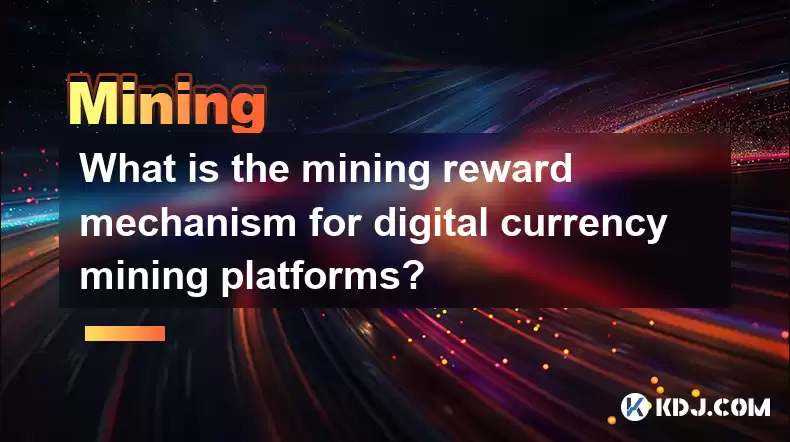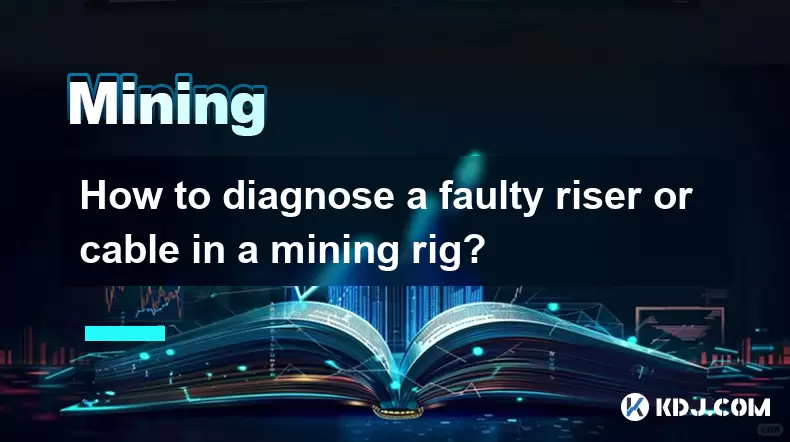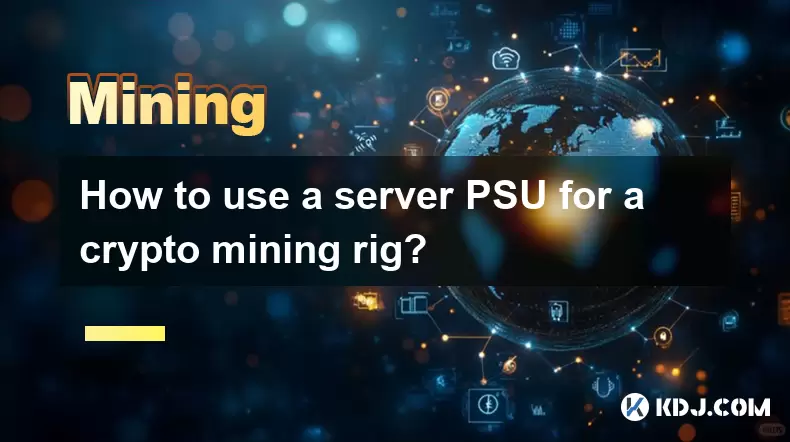-
 Bitcoin
Bitcoin $115100
1.27% -
 Ethereum
Ethereum $3675
2.71% -
 XRP
XRP $2.995
1.45% -
 Tether USDt
Tether USDt $1.000
0.02% -
 BNB
BNB $769.8
2.64% -
 Solana
Solana $168.0
3.25% -
 USDC
USDC $0.9999
-0.01% -
 TRON
TRON $0.3371
1.48% -
 Dogecoin
Dogecoin $0.2051
3.36% -
 Cardano
Cardano $0.7394
2.30% -
 Hyperliquid
Hyperliquid $38.15
0.42% -
 Stellar
Stellar $0.3966
-0.36% -
 Sui
Sui $3.486
2.93% -
 Chainlink
Chainlink $16.72
2.52% -
 Bitcoin Cash
Bitcoin Cash $568.0
4.36% -
 Hedera
Hedera $0.2440
2.59% -
 Ethena USDe
Ethena USDe $1.001
0.04% -
 Avalanche
Avalanche $22.16
2.06% -
 Litecoin
Litecoin $119.1
-0.73% -
 UNUS SED LEO
UNUS SED LEO $8.991
0.04% -
 Toncoin
Toncoin $3.232
-0.39% -
 Shiba Inu
Shiba Inu $0.00001233
2.82% -
 Uniswap
Uniswap $9.717
2.53% -
 Polkadot
Polkadot $3.664
1.85% -
 Dai
Dai $1.000
0.01% -
 Monero
Monero $281.2
-3.89% -
 Bitget Token
Bitget Token $4.350
1.55% -
 Cronos
Cronos $0.1428
5.07% -
 Pepe
Pepe $0.00001050
3.68% -
 Aave
Aave $262.3
3.54%
What is the mining reward mechanism for digital currency mining platforms?
Cryptocurrency mining rewards, crucial for network security, vary by platform and consensus mechanism. Proof-of-Work rewards initially fixed, decrease over time; Proof-of-Stake rewards are proportional to staked cryptocurrency. Transaction fees and platform fees also influence miner profitability.
Mar 24, 2025 at 08:35 am

Key Points:
- Mining rewards are the incentives miners receive for securing a blockchain network.
- Different platforms use varying reward mechanisms, often tied to the specific cryptocurrency's consensus algorithm.
- Proof-of-Work (PoW) rewards are typically fixed initially, then decrease over time according to a pre-defined schedule (halving).
- Proof-of-Stake (PoS) rewards are generally proportional to the amount of cryptocurrency staked and the duration of the stake.
- Other consensus mechanisms have unique reward structures.
- Mining difficulty adjusts dynamically to maintain a consistent block generation time, affecting the profitability of mining.
- Transaction fees contribute to miner rewards in many systems, especially as block rewards diminish.
- Platform fees and pool fees can reduce a miner's net reward.
What is the mining reward mechanism for digital currency mining platforms?
The mining reward mechanism is the system by which digital currency mining platforms compensate miners for their computational work in securing the blockchain. These mechanisms are crucial for the operation and sustainability of many cryptocurrencies. The exact mechanics vary greatly depending on the specific cryptocurrency and the mining platform's policies.
The most common mechanism is associated with Proof-of-Work (PoW) consensus. In PoW systems, miners compete to solve complex cryptographic puzzles. The first miner to solve the puzzle adds a new block to the blockchain and receives a pre-defined reward, typically a fixed amount of the cryptocurrency itself. This reward is often halved at predetermined intervals (known as a "halving"), gradually reducing the rate of new coin creation. Bitcoin, for example, follows this model.
Beyond the block reward, PoW miners also collect transaction fees included within the blocks they successfully mine. These fees are paid by users to prioritize their transactions and contribute significantly to miner income, particularly as block rewards decline over time.
In contrast, Proof-of-Stake (PoS) systems operate differently. Miners (often called validators) don't need to solve complex mathematical problems. Instead, they "stake" their cryptocurrency, locking it up as collateral. Validators are selected to create new blocks probabilistically, based on the amount of cryptocurrency they've staked. The reward is typically proportional to the amount staked and the duration of the stake. This system generally consumes less energy than PoW.
Many other consensus mechanisms exist, each with its unique reward structure. Delegated Proof-of-Stake (DPoS) systems, for example, elect validators who then receive rewards based on votes from token holders. Proof-of-Authority (PoA) relies on a pre-selected set of validators, who are rewarded for maintaining the network. The specifics of these reward systems are determined by the design of the respective cryptocurrency.
Mining difficulty, a crucial factor impacting rewards, automatically adjusts to maintain a consistent block generation time. If many miners join the network, the difficulty increases, making it harder to solve the puzzles and thus reducing individual rewards. Conversely, if fewer miners are active, the difficulty decreases, increasing the likelihood of finding a block and earning a reward.
Platform fees and pool fees can also influence the net rewards received by miners. Some mining platforms charge fees for their services, deducting a percentage from the miner's earnings. Similarly, mining pools, which combine the computing power of many miners, often take a cut of the rewards earned by the pool as a whole. Understanding these fees is vital for accurate profitability calculations.
Common Questions and Answers:
Q: How are mining rewards distributed in a Proof-of-Work system?
A: In PoW, the miner who first solves the cryptographic puzzle receives the entire block reward, plus any included transaction fees. This is a competitive system where the fastest and most powerful miners are most likely to be rewarded.
Q: How do transaction fees affect miner rewards?
A: Transaction fees are added to the block reward. As the block reward decreases over time (as in Bitcoin's halving), transaction fees become an increasingly important component of miner income.
Q: What is the difference between a block reward and a transaction fee?
A: The block reward is a pre-defined amount of cryptocurrency given for adding a block to the blockchain. Transaction fees are payments made by users to incentivize faster transaction processing and inclusion in a block.
Q: How does mining difficulty affect my profitability?
A: Higher mining difficulty means it takes more computational power to solve the puzzles, reducing your chances of earning a block reward. Lower difficulty increases your chances.
Q: What are mining pools, and how do they affect rewards?
A: Mining pools combine the computing power of many miners, increasing their chances of finding blocks. Pools typically take a percentage of the rewards as a fee for their service.
Q: Are there any risks associated with cryptocurrency mining?
A: Yes, risks include fluctuating cryptocurrency prices (affecting the value of your rewards), the cost of electricity and hardware, and the possibility of regulatory changes affecting mining operations.
Q: What are the environmental concerns surrounding cryptocurrency mining?
A: PoW mining, particularly, has been criticized for its high energy consumption. PoS and other consensus mechanisms are generally considered to be more energy-efficient.
Q: How do I choose a suitable mining platform?
A: Consider factors like the platform's fees, its reputation, the cryptocurrency it supports, and its level of security.
Q: What is the future of mining rewards?
A: The future of mining rewards depends on several factors, including technological advancements, regulatory changes, and the adoption of different consensus mechanisms. The trend towards more energy-efficient consensus algorithms might change the landscape significantly.
Disclaimer:info@kdj.com
The information provided is not trading advice. kdj.com does not assume any responsibility for any investments made based on the information provided in this article. Cryptocurrencies are highly volatile and it is highly recommended that you invest with caution after thorough research!
If you believe that the content used on this website infringes your copyright, please contact us immediately (info@kdj.com) and we will delete it promptly.
- Avalanche vs. Ruvi AI: Daily Sales Tell a Story of Crypto Disruption
- 2025-08-07 06:29:35
- DeSoc: The Crypto to Buy Now for a Decentralized Future (and Maybe 43x Gains!)
- 2025-08-07 06:50:16
- Arctic Pablo Coin: Riding the Meme Coin Wave with a Deflationary Twist
- 2025-08-07 07:18:13
- XRP Price Skyrocket? Decoding the Cryptocurrency's Next Move
- 2025-08-07 07:31:50
- Meme Coins in August 2025: Riding the Rally Wave
- 2025-08-07 06:56:08
- Big Whales, Altcoins, and Heavy Transactions: What's Moving the Crypto Market?
- 2025-08-07 06:29:35
Related knowledge

What are the differences between mining on Windows vs. Linux?
Aug 06,2025 at 11:29pm
Overview of Cryptocurrency Mining PlatformsCryptocurrency mining involves using computational power to solve complex cryptographic puzzles and validat...

Can you mine cryptocurrency using solar power?
Aug 07,2025 at 12:00am
Understanding the Basics of Cryptocurrency MiningCryptocurrency mining involves validating transactions on a blockchain network by solving complex cry...

How to build a mining rig inside a PC case?
Aug 06,2025 at 11:01pm
Understanding the Basics of a Mining Rig in a PC CaseBuilding a mining rig inside a PC case involves transforming a standard computer chassis into a d...

How to diagnose a faulty riser or cable in a mining rig?
Aug 07,2025 at 01:49am
Understanding the Role of Riser Cables in Mining RigsIn a cryptocurrency mining rig, riser cables serve as the bridge between the motherboard and the ...

How to set up a mining farm with multiple rigs?
Aug 07,2025 at 12:38am
Understanding the Basics of a Multi-Rig Mining FarmSetting up a mining farm with multiple rigs begins with understanding the core components involved ...

How to use a server PSU for a crypto mining rig?
Aug 06,2025 at 08:39pm
Understanding Server PSUs and Their Relevance to Crypto MiningCrypto mining rigs demand stable, high-wattage power supplies to run multiple GPUs effic...

What are the differences between mining on Windows vs. Linux?
Aug 06,2025 at 11:29pm
Overview of Cryptocurrency Mining PlatformsCryptocurrency mining involves using computational power to solve complex cryptographic puzzles and validat...

Can you mine cryptocurrency using solar power?
Aug 07,2025 at 12:00am
Understanding the Basics of Cryptocurrency MiningCryptocurrency mining involves validating transactions on a blockchain network by solving complex cry...

How to build a mining rig inside a PC case?
Aug 06,2025 at 11:01pm
Understanding the Basics of a Mining Rig in a PC CaseBuilding a mining rig inside a PC case involves transforming a standard computer chassis into a d...

How to diagnose a faulty riser or cable in a mining rig?
Aug 07,2025 at 01:49am
Understanding the Role of Riser Cables in Mining RigsIn a cryptocurrency mining rig, riser cables serve as the bridge between the motherboard and the ...

How to set up a mining farm with multiple rigs?
Aug 07,2025 at 12:38am
Understanding the Basics of a Multi-Rig Mining FarmSetting up a mining farm with multiple rigs begins with understanding the core components involved ...

How to use a server PSU for a crypto mining rig?
Aug 06,2025 at 08:39pm
Understanding Server PSUs and Their Relevance to Crypto MiningCrypto mining rigs demand stable, high-wattage power supplies to run multiple GPUs effic...
See all articles

























































































